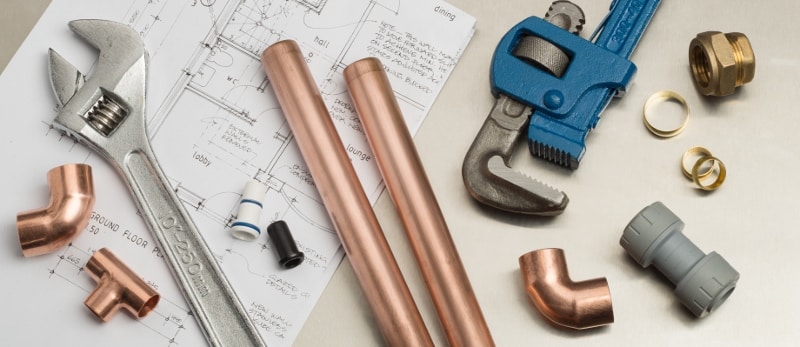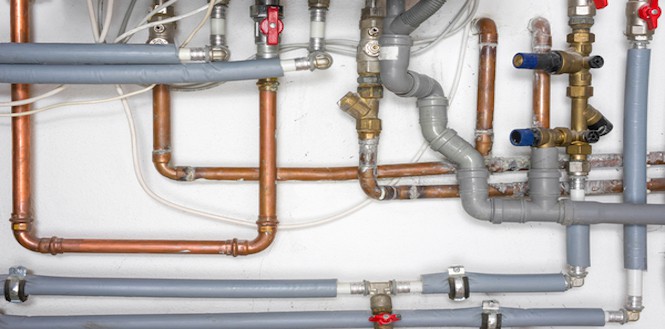The article author is making several great pointers related to The Inner Workings of Your Home's Plumbing in general in the content on the next paragraphs.

Recognizing exactly how your home's pipes system works is vital for every single home owner. From providing tidy water for drinking, cooking, and showering to securely getting rid of wastewater, a well-maintained plumbing system is essential for your family members's health and convenience. In this extensive guide, we'll check out the complex network that composes your home's plumbing and deal tips on maintenance, upgrades, and handling common issues.
Intro
Your home's pipes system is greater than simply a network of pipelines; it's an intricate system that guarantees you have accessibility to tidy water and reliable wastewater elimination. Recognizing its parts and just how they interact can aid you prevent pricey repair services and guarantee everything runs smoothly.
Basic Elements of a Pipes System
Pipelines and Tubes
At the heart of your pipes system are the pipes and tubing that carry water throughout your home. These can be made of various products such as copper, PVC, or PEX, each with its benefits in regards to longevity and cost-effectiveness.
Fixtures: Sinks, Toilets, Showers, etc.
Components like sinks, commodes, showers, and tubs are where water is utilized in your house. Comprehending how these components attach to the pipes system assists in diagnosing troubles and intending upgrades.
Valves and Shut-off Points
Shutoffs regulate the circulation of water in your plumbing system. Shut-off valves are crucial during emergencies or when you need to make repair work, allowing you to separate parts of the system without interfering with water flow to the entire residence.
Water System
Key Water Line
The main water line attaches your home to the local supply of water or a private well. It's where water enters your home and is dispersed to various components.
Water Meter and Pressure Regulator
The water meter steps your water usage, while a pressure regulatory authority guarantees that water moves at a risk-free stress throughout your home's pipes system, avoiding damage to pipes and components.
Cold Water vs. Hot Water Lines
Recognizing the difference between cold water lines, which provide water directly from the major, and hot water lines, which lug warmed water from the water heater, helps in repairing and preparing for upgrades.
Drainage System
Drain Pipes Water Lines and Traps
Drain pipes bring wastewater away from sinks, showers, and commodes to the sewer or septic system. Traps prevent drain gases from entering your home and additionally trap particles that could create clogs.
Air flow Pipes
Air flow pipelines enable air into the drain system, protecting against suction that can slow down drainage and cause catches to empty. Correct air flow is crucial for keeping the stability of your plumbing system.
Relevance of Appropriate Water Drainage
Ensuring proper water drainage avoids back-ups and water damages. Frequently cleansing drains and preserving traps can stop expensive repairs and expand the life of your plumbing system.
Water Furnace
Types of Hot Water Heater
Water heaters can be tankless or typical tank-style. Tankless heaters warm water as needed, while storage tanks save heated water for prompt use.
Updating Your Pipes System
Reasons for Upgrading
Upgrading to water-efficient fixtures or replacing old pipelines can enhance water high quality, reduce water costs, and increase the worth of your home.
Modern Pipes Technologies and Their Advantages
Check out modern technologies like smart leakage detectors, water-saving commodes, and energy-efficient water heaters that can save cash and reduce environmental influence.
Cost Factors To Consider and ROI
Calculate the upfront costs versus long-lasting savings when considering pipes upgrades. Numerous upgrades pay for themselves with lowered energy bills and fewer fixings.
How Water Heaters Connect to the Plumbing System
Recognizing how water heaters link to both the cold water supply and warm water distribution lines helps in identifying problems like not enough warm water or leaks.
Maintenance Tips for Water Heaters
Consistently flushing your water heater to eliminate debris, inspecting the temperature level setups, and evaluating for leakages can extend its lifespan and enhance energy effectiveness.
Usual Pipes Problems
Leaks and Their Causes
Leaks can happen as a result of maturing pipes, loosened installations, or high water stress. Addressing leaks quickly stops water damages and mold growth.
Clogs and Blockages
Clogs in drains and commodes are frequently triggered by purging non-flushable things or a build-up of oil and hair. Making use of drainpipe displays and bearing in mind what goes down your drains pipes can protect against blockages.
Indicators of Pipes Problems to Expect
Low tide pressure, sluggish drains, foul odors, or uncommonly high water bills are signs of potential plumbing problems that should be addressed without delay.
Pipes Upkeep Tips
Routine Assessments and Checks
Arrange annual pipes evaluations to catch concerns early. Seek indicators of leakages, rust, or mineral accumulation in faucets and showerheads.
DIY Upkeep Tasks
Straightforward tasks like cleaning tap aerators, looking for toilet leakages utilizing dye tablet computers, or shielding subjected pipes in cool climates can protect against major plumbing issues.
When to Call a Specialist Plumbing Professional
Know when a pipes concern needs professional proficiency. Trying complicated repair work without correct expertise can lead to even more damage and higher repair prices.
Tips for Decreasing Water Usage
Straightforward routines like repairing leakages immediately, taking shorter showers, and running complete tons of laundry and recipes can save water and lower your energy expenses.
Eco-Friendly Pipes Options
Think about lasting plumbing materials like bamboo for floor covering, which is durable and environmentally friendly, or recycled glass for kitchen counters.
Emergency Readiness
Actions to Take During a Pipes Emergency situation
Know where your shut-off valves are located and just how to turn off the water system in case of a burst pipeline or major leak.
Relevance of Having Emergency Situation Get In Touches With Useful
Maintain get in touch with info for local plumbing professionals or emergency situation services readily available for fast reaction during a pipes crisis.
Environmental Effect and Preservation
Water-Saving Fixtures and Devices
Installing low-flow taps, showerheads, and toilets can considerably minimize water use without compromising efficiency.
DIY Emergency Situation Fixes (When Suitable).
Temporary solutions like using duct tape to spot a leaking pipe or positioning a container under a trickling faucet can decrease damage till an expert plumber arrives.
Verdict.
Understanding the makeup of your home's plumbing system empowers you to preserve it effectively, conserving time and money on repair services. By complying with normal maintenance routines and remaining educated about modern plumbing modern technologies, you can guarantee your plumbing system operates effectively for many years to come.
The Anatomy of Your Home s Plumbing System
Understanding the anatomy of your home s plumbing system is essential for any homeowner. It not only helps in identifying potential issues but also facilitates effective communication with professionals when repairs or upgrades are needed. Your home s plumbing system is more than just pipes and faucets; it s a complex network that ensures the efficient and hygienic flow of water in and out of your house. In this blog, we ll dissect the crucial components of your home s plumbing system. For those in Antelope Valley, Brock Plumbing is your trusted partner for all your plumbing needs, ensuring your system functions smoothly and efficiently.
Water Supply System
Main Water Line: This is where your home s plumbing system begins. The main water line connects your home to the public water supply or a private well. Pipes and Shut-off Valves: Pipes distribute water throughout your home. Shut-off valves are crucial for controlling the flow of water and making repairs without shutting off the entire system. Drainage System
Drain Pipes: These pipes carry waste and water away from sinks, toilets, and showers. Vents: Vents allow sewer gases to escape and help maintain proper pressure in the drainage pipes, ensuring efficient flow of wastewater. Traps: Every fixture has a trap, a U-shaped pipe that holds water and prevents sewer gases from entering your home. The most common is the P-trap under sinks. Fixtures and Appliances
Fixtures and appliances are the most interacted with parts of your plumbing system. They include sinks, toilets, showers, dishwashers, and washing machines. Each fixture and appliance has its own supply and drainage connection, ensuring they receive clean water and can dispose of wastewater effectively.
Water Heating System
Your water heater is a crucial component, providing hot water to various fixtures and appliances in your home. It can be tank-based or tankless, with each type having its own set of advantages and maintenance requirements. Regular maintenance is essential to ensure efficient operation and extend the lifespan of the unit.
Sump Pump
In areas prone to flooding or with high water tables, a sump pump is an essential part of the plumbing system. It s installed in the lowest part of your basement or crawlspace and pumps out water that accumulates, preventing flooding and protecting your home from water damage.
Septic System
Homes that are not connected to a municipal sewer system have a septic system and an underground wastewater treatment structure. Understanding how to maintain your septic system is crucial to prevent backups, odors, and early system failure.
Conclusion
Your home s plumbing system is a complex and essential network, ensuring the efficient and hygienic flow of water in and out of your property. Understanding its key components helps in maintaining it properly and identifying issues before they escalate into major problems. For residents in Antelope Valley, Brock Plumbing is dedicated to providing top-notch services, ensuring that every part of your plumbing system is in perfect working order. Trust our team of professionals to handle all your plumbing needs, ensuring your home remains comfortable, safe, and well-maintained.
https://brockplumbinganddrains.com/blog/the-anatomy-of-your-homes-plumbing-system/

Hopefully you liked our excerpt about Anatomy of a House: Understanding the Components. Thanks a ton for taking the time to read our article post. Liked our blog entry? Please quickly share it. Help others check it out. I am grateful for being here. Please check up our blog back soon.
Explore